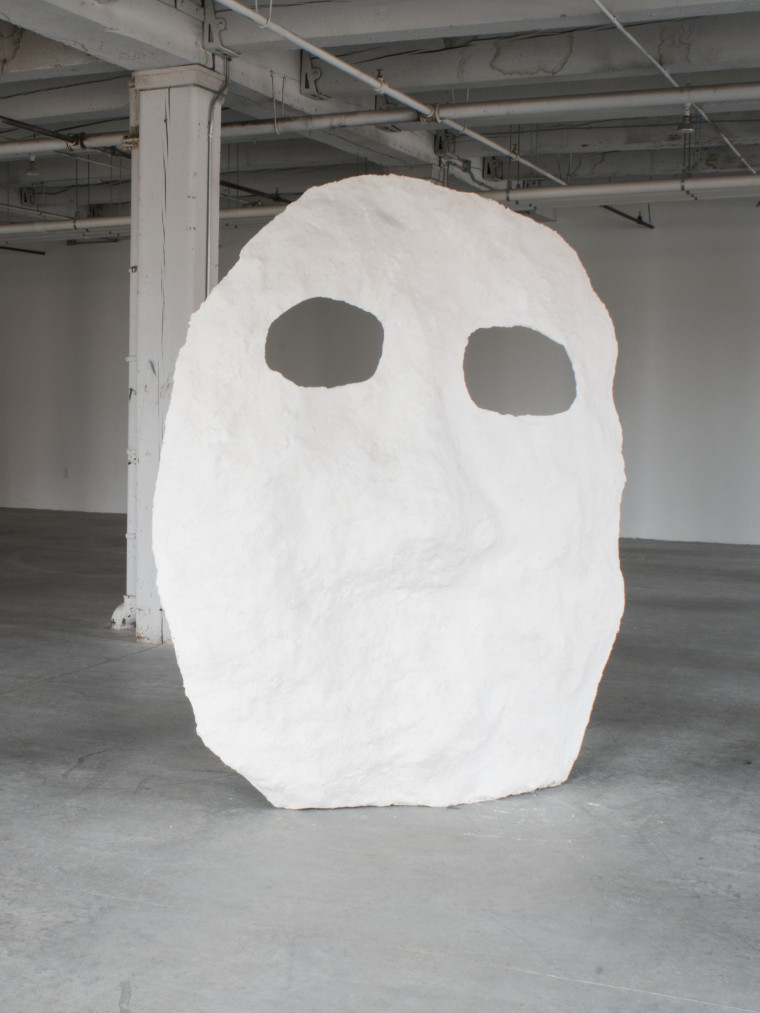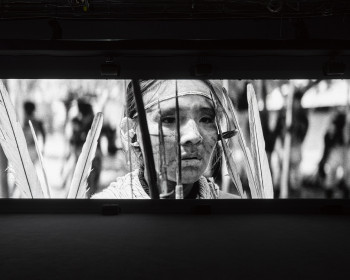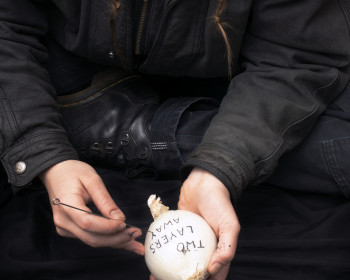Faculty Exhibition—Joel W. Fisher and Jess Perlitz
Open gallery

January 18 - March 18, 2018
It is with great pleasure that the Ronna and Eric Hoffman Gallery of Contemporary Art at Lewis & Clark College presents work by Joel W. Fisher and Jess Perlitz. Fisher is an assistant professor of art and the studio head of photography at Lewis & Clark, a position he has held since 2012. Perlitz is an assistant professor of art and studio has been the head of sculpture at Lewis & Clark since 2013.
Fisher has a long-standing interest in the dissemination of content through the photobook format, and in the exhibition Abridged Proof we are invited to preview a much larger, longer project of his entitled Agapage, which will consist of both book and web-based pieces. In this complex and compelling work, Fisher fuses text with images that examine the contemporary photographer’s relationship with lens-based media and the meaning of pictures.
At the same time as Fisher’s exhibition is shown at the Hoffman Gallery, the Museum of Modern Art presents American Surfaces and the Photobook (November 22, 2017–March 18, 2018). The MoMA exhibition acknowledges that the photobook is a current and dynamic vehicle through which to view, curate, and collect photography. Fisher’s serious and enthusiastic investigation of the photobook, which Abridged Proof is part of, is evidence of his currency in conversations about contemporary photography.
Concurrent with her exhibition at the Hoffman Gallery, an installation by Perlitz entitled Chorus is being shown at the Eastern State Penitentiary, a historical site in Philadelphia. This sound installation is based on a question that Perlitz asked, in person, of incarcerated men and women from throughout the United States: “If you could sing one song and have that song heard, what would it be?” Her compilation of the songs they sang is played inside a cell at Eastern State, where visitors experience the recordings as a collage of aural sensations. Chorus, I think, is characteristic of Perlitz’s investigations. She is keenly able to embody visually (or in the case of Chorus, experientially) what it feels like to be in another person’s place.
This ability to create visual metaphors that summon profound empathy is evident in Perlitz’s exhibition Forever washing itself. The title comes from the sculpture Forever Washing, a gargantuan foot that is in the process of being constantly bathed. The image beautifully describes the way in which artists—and all human beings—must acknowledge one’s place in the world while simultaneously being nimble in response to its ever-changing and ever-challenging nature. It is as if we are invariably shedding our own skin, forever altering, adjusting, and cleansing the image that we present to the world, and to our own selves.
More Ronna and Eric Hoffman Gallery of Contemporary Art Stories
Ronna and Eric Hoffman Gallery of Contemporary Art is located in Hoffman Gallery on the Undergraduate Campus.
MSC: 95
email gallery@lclark.edu
voice 503-768-7687
fax 503-768-7682
Ronna and Eric Hoffman Gallery of Contemporary Art
Lewis & Clark
615 S. Palatine Hill Road MSC 95
Portland OR 97219

